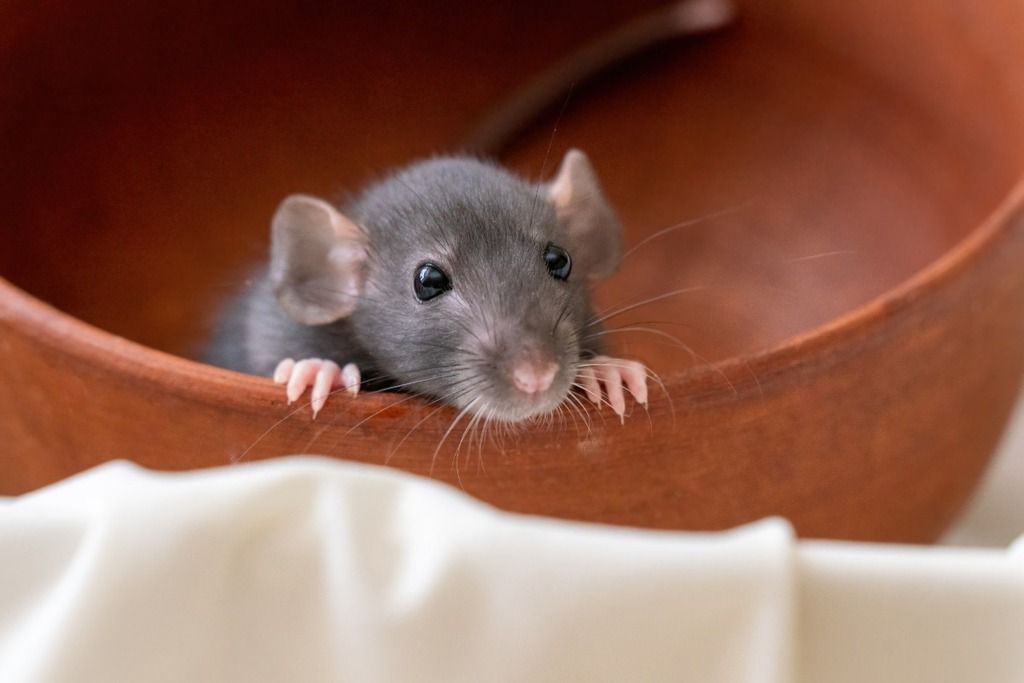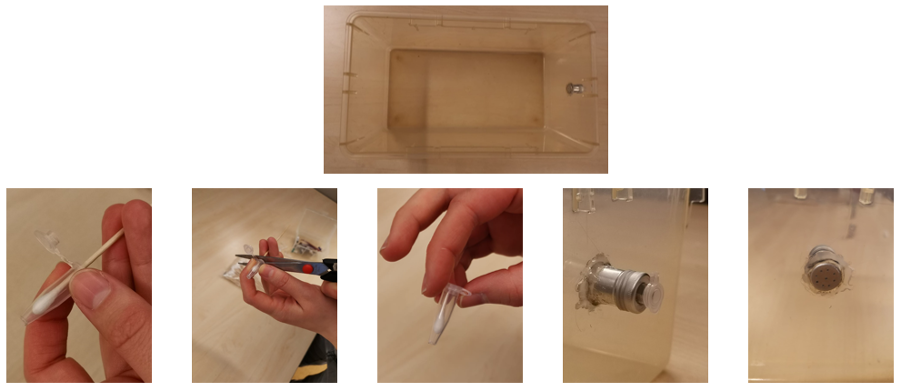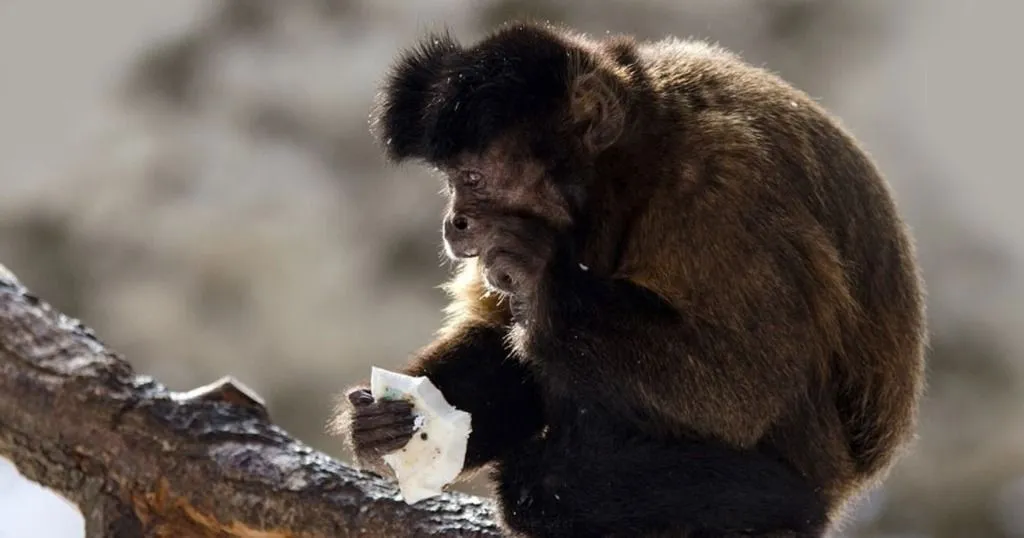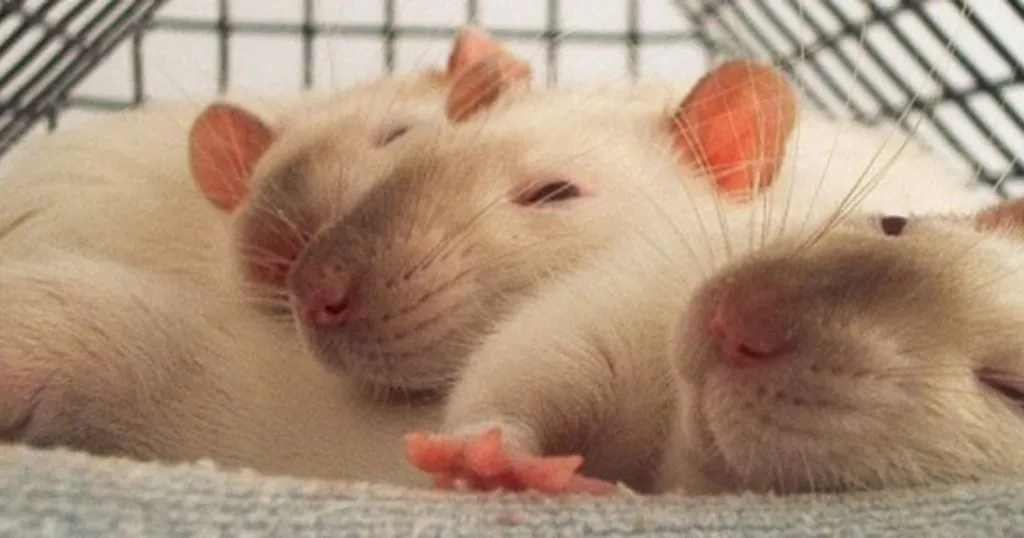How to analyze different characteristics of olfaction in rodents
Correct analysis of olfaction is crucial for an accurate interpretation of mouse social behavior. Today's guest article describes how to analyze different characteristics with the olfactory habituation/dishabituation test.
Posted by
Published on
Thu 08 Dec. 2022
Topics
| EthoVision XT | Mice | Olfaction | Video Tracking |

Today we are honered with a great contribution to our blog from Betty Hornix. She is about to get her PhD and works at the lab of Martien Kas, at the University of Groningen (The Netherlands). She describes with great detail how to set up and perform a mice olfactory test with EthoVision XT video tracking. Enjoy!
Olfaction and behavior
Interaction between people and between animals depend on proper olfactory processing. When something is off in this processing this could affect proper social behavior (Hornix et al., 2018).
Correct analysis of olfaction is crucial for an accurate interpretation of various mouse behaviors, especially when looking at social behavior. Below we will describe how to perform the olfactory habituation/dishabituation test. We will explain how to DIY your own test cage, which preparations are necessary, how to perform the test, and how to analyze the videos using EthoVision XT.

The olfactory habituation/dishabituation test
The olfactory habituation/dishabituation test (OHDT) assesses whether an animal is able to detect and distinguish different odors. It consists of successive presentations of different odors. We used a sequence of water, two non-social odors, and two social odors.
Each smell is presented to the animal in three consecutive trials for a duration of 2 min (see timetable below). A decrease in olfactory investigation of the odor over these three trials is defined as habituation. When an increase of sniffing is seen when a novel odor is presented, the animal shows an intact behavior called dishabituation.
Minimal inter-trial manipulations
The method described here, the olfactory habituation/dishabituation test, involves minimal inter-trial manipulations as the inside of the cage is not disturbed (adapted from Yang & Crawley, 2009 and Oummadi et al., 2019). Since the odor stimulus (the cotton tip inside the 500 ul tube) does not touch any part of the cage or cage lid, cross-trial contamination is easily avoided.

How to make your own test cage
The test can be executed in normal home cage that needs a couple of small adjustments. A separate cage is used for each animal that is tested on one day. This is done because the odors will linger in the cages.
We burned a hole in the short side of the cage and we made holes in small tin cans with a small nail. One small tin can is attached with hot glue in the hole burned in each cage (see pictures below). We advise to not use silicone glue, as this smells a lot. You want to keep the presence of distracting smells to a minimum.
The odor will be presented to the animal via this tin can. This way the inside of the cage is not disturbed during the test.
Preparations necessary before testing
The test takes place over two consecutive days. On the first day the animals are acclimatized to their cage and the odor tubes are prepared. Furthermore, the cages are cleaned and filled with a small layer of bedding. We used a very mild cleaning agent to reduce smells lingering in the cage.
Acclimatization and testing
Acclimatization of the animals to their test cage
We used 500 ul tubes to present the odors via the tin can to the animals. 17 tubes per animal are necessary and the tips of the tubes need to be cut off (see pictures below). Two of these tubes are filled with dry cotton swabs. It is important to wear gloves during every step of preparation and execution of the test to prevent odor transfer as much as possible.
In the afternoon, each animal is acclimatized to their testing cage for 30 min while a tube with dry cotton swab is inserted in the tin can.

Preparations of the olfactory stimuli
On the morning of the testing day the odor tubes are prepared. We used water, almond extract, orange extract, juvenile fecal matter, adult fecal matter. Almond and orange extract were selected because they are very distinct, yet neutral odors.
We prepared the dilutions in water and the tubes in the order that you test them (distilled water> almond (1:15) > orange (1:5) >social odor 1> social odor 2), change gloves between odors and do not touch the cotton end of the swab (see pictures above). It is very important to not mix the odors! This is a very time-consuming task, so take enough time to prepare everything.
Performing the test
The test takes in total 49 min, incl. 5 min acclimation at the beginning with a new tube holding a dry cotton swab. The odors are presented 3 times after each other, every time for 2 min with an ITI of 1 min, which comes down to 15 trials (see timetable above). We used Media Recorder to record the videos from above the testing table.
The animal can freely explore the testing cage. Great care needs to be taken (by changing gloves constantly) when preparing the odors and between animal changes to avoid transferring and mixing odors.
Multiple animals can be tested at the same time in their own testing cage as long as great attention is being paid to exacting the timing of presenting the odors for the best success with automatic analysis with EthoVision XT 16.
FREE TRIAL: Try EthoVision XT yourself!
Request a free trial and find out what EthoVision XT can do for your research!
- A cost-effective solution
- Powerful data selection
- Most cited video tracking system
Analyze the videos with EthoVision XT
In EthoVision XT, the time spent sniffing the odor was measured when the nose point of the animal was inside the zone we digitally marked around the tin can of 3.5 cm.
Extraction and visualization of the data
The data was exported in time bins of 1 min and the 2 min duration of each trial was added up. We visualized the results by plotting the time sniffing the odor over the 15 trials. Habituation and dishabituation worked perfectly for the non-social odors and the first social odor in this experiment. This was apparent as the sniffing time decreased with each of the 3 trials for each of these odors.
Furthermore, an increase in sniffing time was seen when the odor was changed to a novel one. In addition, the animals were able to distinguish the first social odor from the last non-social odor in a similar fashion. They had more difficulty with distinguishing the two social odors. We recommend to use more distinctive social odors, like different strains or bigger age differences.
Effective testing and automation of olfaction
In conclusion, the olfactory habituation/dishabituation test is very effective to test olfactory function and to separate different characteristics within olfactory behavior. Furthermore, this method leaves the animals undisturbed during testing which reduces stress and which makes it possible to very easily automate the analysis with EthoVision XT.
References
- Hornix, B. E., Havekes, R., & Kas, M. J. H. (2018). Multisensory cortical processing and dysfunction across the neuropsychiatric spectrum. Neuroscience & Biobehavioral Reviews. https://doi.org/10.1016/J.NEUBIOREV.2018.02.010
- Oummadi, A., Meyer-Dilhet, G., Béry, A., Aubert, A., Barone, P., Mortaud, S., Guillemin, G. J., Menuet, A., & Laugeray, A. (2019). 3Rs-based optimization of mice behavioral testing: The habituation/ dishabituation olfactory test. https://doi.org/10.1016/j.jneumeth.2019.108550
- Yang, M., & Crawley, J. N. (2009). Simple behavioral assessment of mouse olfaction. Current Protocols in Neuroscience, CHAPTER(SUPPL. 48). https://doi.org/10.1002/0471142301.ns0824s48
Related Posts

Serotonin and social skills: how adult mice differ from juveniles

Unraveling primate behavior, why do monkeys rub their fur?
